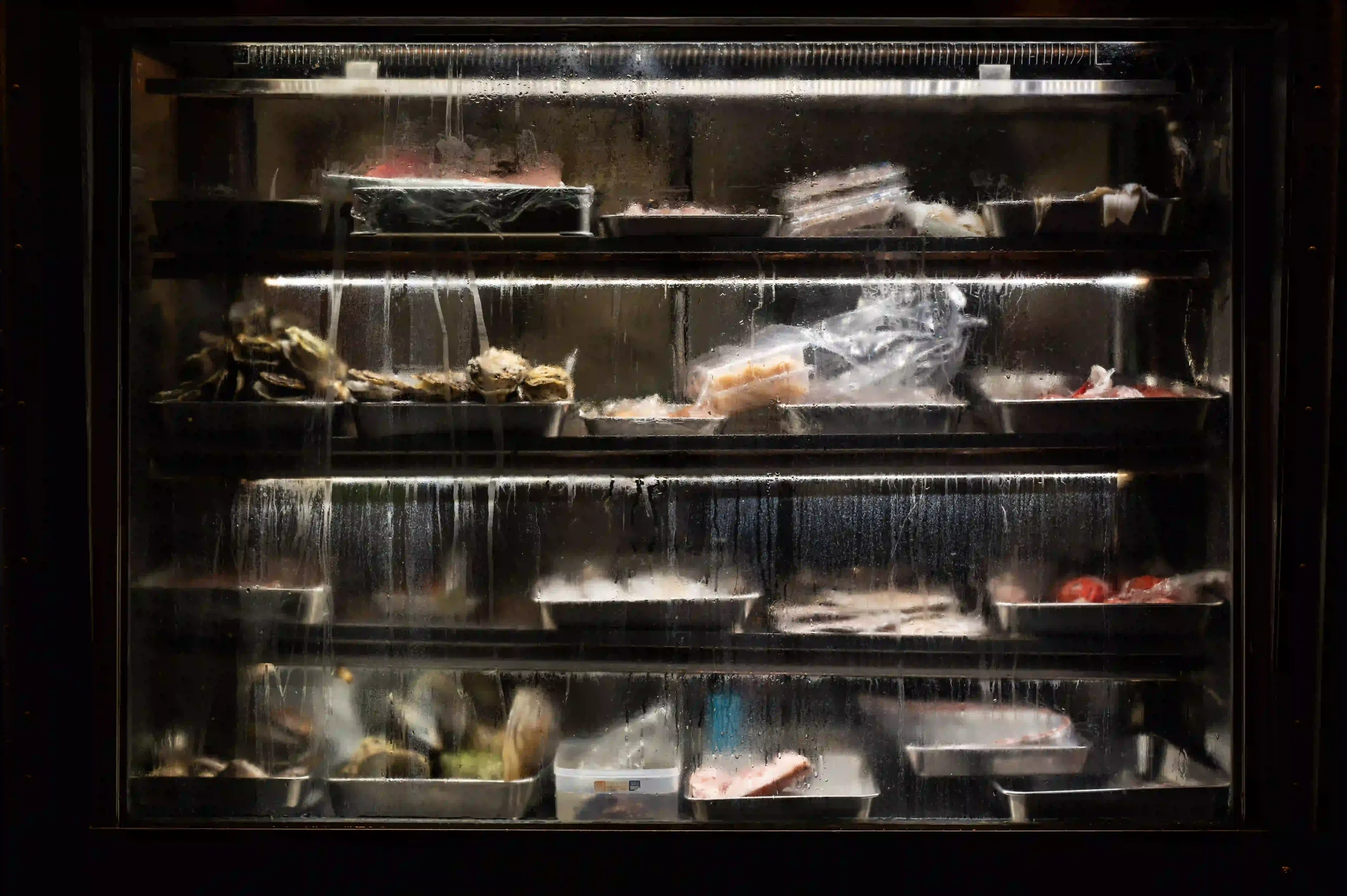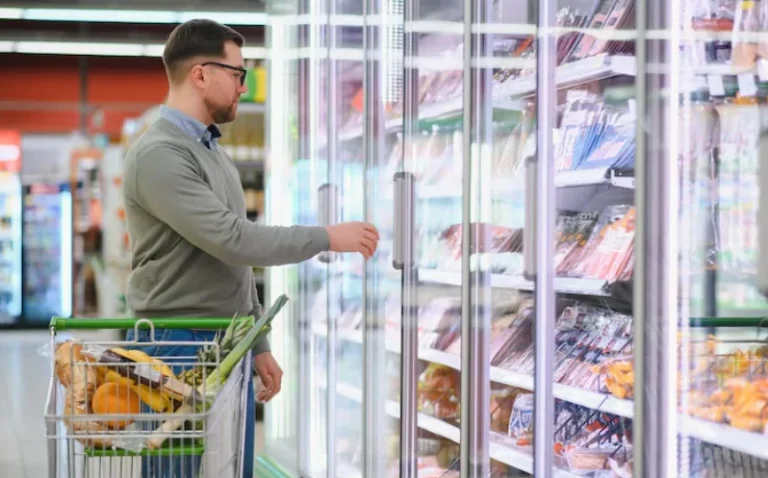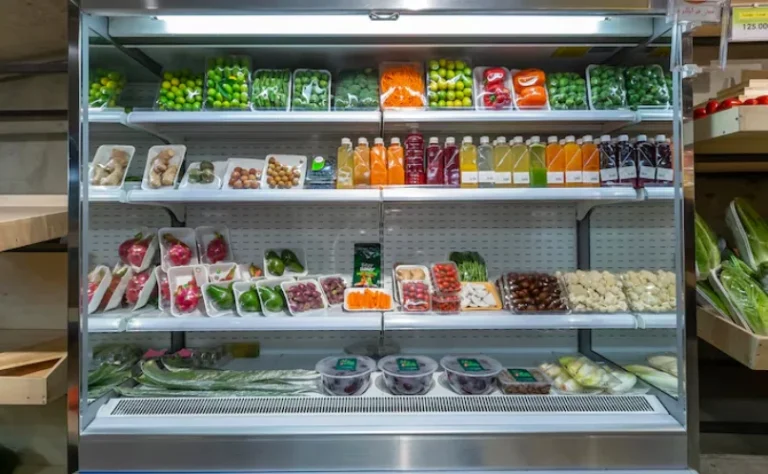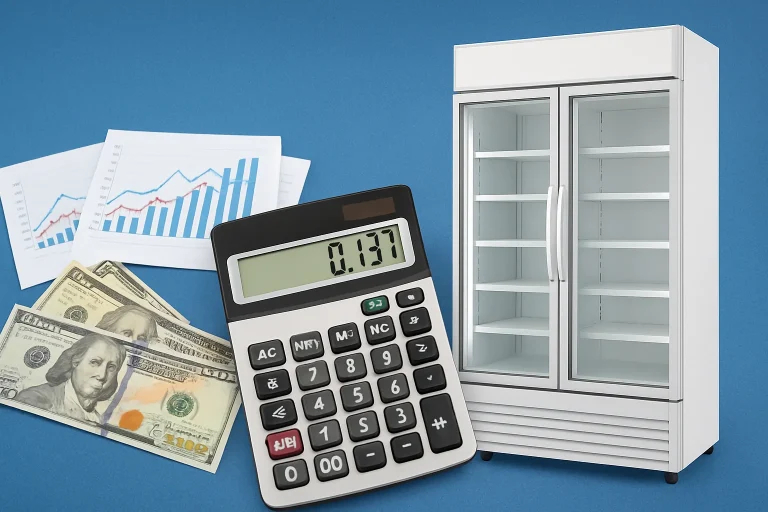
Picking the right stuff for a commercial cooler is a very important choice. It’s about more than just cooling. The refrigerant you choose decides how well the cooler runs and how much it costs you. What’s more, it has a big effect on the environment and whether you’re following international laws.
With everyone more worried about climate change and the ozone layer, the environment is now a huge factor in choosing a refrigerant. People are really paying attention. So now, these substances are judged by their Ozone Depletion Potential (ODP) and Global Warming Potential (GWP). Picking one that performs well and meets green rules is the key. This choice helps a business succeed for years to come.
How Refrigerants Work in Commercial Refrigeration Systems
So, why does the choice of refrigerant matter so much? To get it, you first need to understand how these chemicals work inside a commercial cooler.
A cooler’s cooling cycle has four main steps. They are evaporation, compression, condensation, and expansion. In this cycle, the refrigerant’s job is to grab heat from inside the cooler and then dump it outside during condensation. This process repeats over and over, and that’s what keeps your food and drinks cold.
Several key parts make this happen. These include the evaporator coil, compressor, condenser coil, and expansion valve. Every part has a job in making sure heat is moved efficiently. The refrigerant itself is the special liquid that carries the heat energy through the whole system.
Common Types of Refrigerants Used in Commercial Coolers
Over the years, many kinds of refrigerants have been put to use in commercial cooling. Each group has its own special features that make it good for certain jobs.
Hydrofluorocarbons (HFCs)
HFCs are man-made chemicals. They became popular as replacements for older chemicals that hurt the ozone layer.
R-134a: Applications and Characteristics
You’ll often find R-134a in things like drink coolers and display cases that need medium-level cooling. It works quite well, thermodynamically speaking. However, its GWP is around 1,430, which is pretty high. Thus, it’s not the best choice anymore because of today’s green standards.
R-404A: Performance and Limitations
R-404A is another common HFC mix. It is used in freezers and other equipment that needs to be very cold. The problem is its GWP is over 3,900. Because of its big environmental footprint, there is a lot of pressure from regulators around the world to stop using it.
Hydrocarbons (HCs)
Hydrocarbons are natural refrigerants. They are popular because they have a low GWP and use less energy.
R-290 (Propane): Efficiency and Safety Considerations
Create is dedicated to using green R290 refrigerants. They provide fantastic cooling power with a GWP of only 3. R-290 is super-efficient and good for the earth, but it’s also flammable. So, this means safety rules must be followed carefully when it’s being installed or serviced.
Natural Refrigerants
Other natural choices like ammonia and carbon dioxide are becoming more common. They are gaining ground because they have almost no impact on the environment.
Ammonia (R-717): Industrial Use Cases
Ammonia is amazing when it comes to saving energy and it has zero GWP. But, it is poisonous and needs experts to handle it. Because of this, you usually only see it in huge industrial refrigerators, not in your typical commercial coolers.
Carbon Dioxide (R-744): Low Environmental Impact Option
CO₂ (R-744) won’t catch fire and isn’t poisonous in normal situations. Better yet, its GWP is just 1. We provide CO₂ solutions. This makes it a great and growing choice for commercial cooling systems that want to be sustainable.
Factors to Consider When Selecting a Refrigerant
Choosing the best refrigerant means looking at a few different technical and practical things. First of all, cooling needs are different for every machine. A drink display is not the same as a frozen food locker. So, you have to know what you need. Energy savings are also a huge deal. A more efficient refrigerant means you spend less on power bills over the years. Besides, we use top-brand inverter compressors that the industry trusts, so that our products save even more energy.
You also have to check the environmental harm by looking at the ODP and GWP numbers. Lower numbers are better for the planet. Another point is whether it will work with the cooler you already have. Sometimes you need to update parts when you change refrigerants. And don’t forget safety! Things like toxicity or flammability have to be considered to keep workers and shoppers safe.
Regulations Affecting Commercial Refrigerants
There are strict rules about refrigerants all over the world. Big international agreements like the Montreal Protocol and the Kigali Amendment are getting rid of substances with high ODP and GWP numbers. You must follow local rules, too. For instance, there are the EPA SNAP rules in the U.S. and the F-Gas regulations in the EU. Following these is a must to sell in those markets.
Create has earned many certifications, like CE, CB, ETL, ISO, GEMS, ROHS, UL, and IEC. This shows that all our product lines meet global safety and environmental rules.
Recharging Your Commercial Refrigerator
Even a system that’s taken care of might need a recharge someday. There are a few signs to watch for. Maybe the cooling isn’t as good as it used to be. You might see frost building up on the evaporator coils. Or you could hear weird noises from the compressor.
This is a job that should only be done by a trained professional. The process starts with recovering any old refrigerant left in the system. Next, the technician will fix any leaks and then use a vacuum to suck out all the moisture and air. Finally, they will add the new refrigerant, measuring it exactly with digital scales to match the maker’s instructions.
Maintenance Tips to Extend the Life of Your Refrigeration System
Doing regular maintenance can make your equipment last much longer and work better. It’s very important to have a regular schedule for finding and fixing leaks. Small leaks can turn into big, expensive problems if you ignore them. You should also keep an eye on pressure levels and temperature settings. If they don’t match what they’re supposed to be, it could be a sign of a hidden problem. We suggest getting a professional check-up at least once a year. This allows experts to spot and fix wear-and-tear on parts before they break.
Introducing Create Refrigeration as a Trusted Equipment Supplier
When you need to find dependable cooling equipment that uses modern refrigerants like R-290 or CO₂, you should pick a supplier with lots of experience. Create Refrigeration is a large group with 12 subsidiaries and has grown to be China’s biggest one-stop-shop manufacturer. We are based in Xingfu Industrial Park in Binzhou City. From our modern factories, which cover 360,000 square meters, we provide custom plans for supermarkets all over the globe.
Create Refrigeration makes a broad variety of gear for commercial supermarkets. This includes island freezers, coolers with glass doors, cabinets for fresh meat, and kitchen units made of stainless steel. We follow tough factory inspection rules and have many quality certificates, which shows we are serious about dependability.

Our help doesn’t stop with just selling hardware. We also provide free layout planning using CAD, OEM/ODM custom services, and help with international shipping, including DDP delivery. And, we offer a one-year warranty that includes spare parts. For questions or to place a custom order, just contact us. We can start with an order as small as one unit.
Summary
Picking the right refrigerant for your commercial cooler is a balancing act. You have to think about performance, safety rules, and being good to the environment. Choices like R-290 (propane) are very efficient and have a tiny climate impact. Meanwhile, CO₂ systems offer a safe bet for the future that will meet new rules as they come out.
Working with a skilled maker like Create Refrigeration means you get certified products built with green technology in mind. We give full support from the very beginning—from the design phase all the way to after-sale service. This helps our equipment fit perfectly into your business and supports your long-term green goals.
FAQs
Q1: What is the most eco-friendly refrigerant for commercial coolers?
A: R-290 (propane) is often seen as one of the greenest choices. Its Global Warming Potential (GWP) is extremely low, at just 3. Create is dedicated to the use of environmentally friendly R290 refrigerants. This makes it a perfect pick for companies that want to lower their carbon footprint but still get great performance.
Q2: Can I replace my current refrigerant with a newer type without changing equipment?
A: It depends. You really need a professional to check if your system is compatible and can be retrofitted. A technician needs to see if your current parts (like the compressor and valves) can handle the new refrigerant’s properties, such as its pressure levels and the type of oil it needs.
Q3: How often should I have my commercial refrigerator’s refrigerant checked?
A: The best plan is to have it checked once a year during a regular maintenance visit. Of course, if you notice problems sooner, you should call for service. Checking the pressure levels often helps catch early signs of leaks or other issues that might need a technician’s help.











